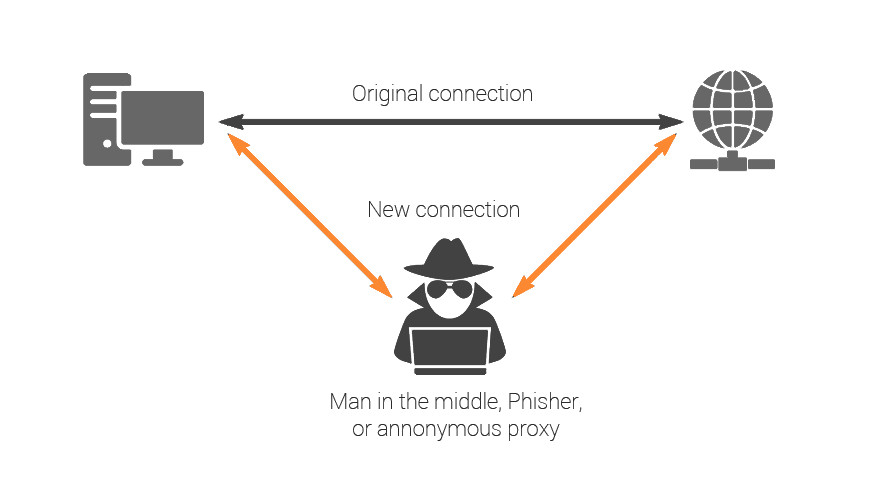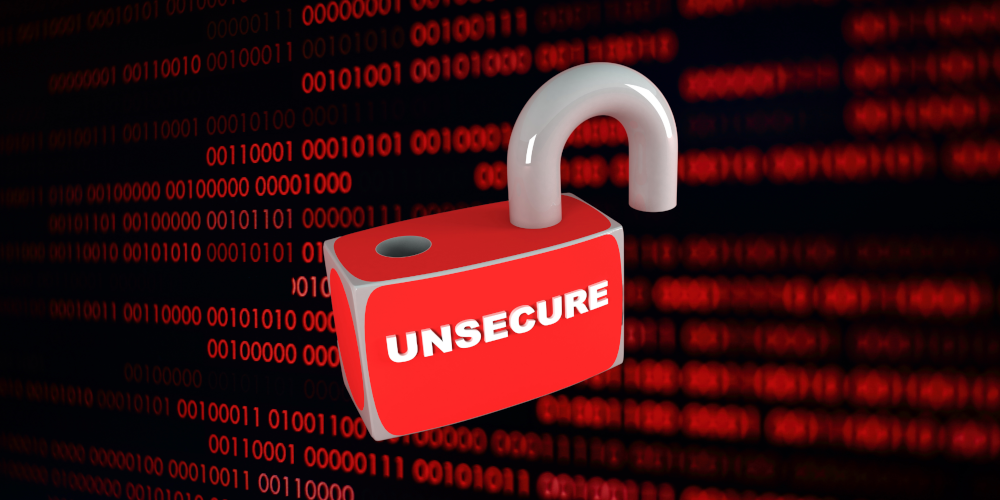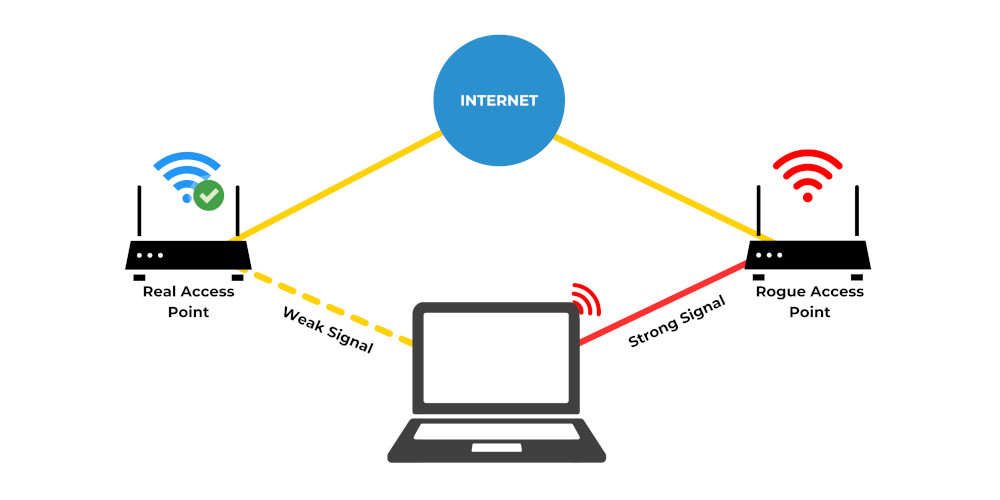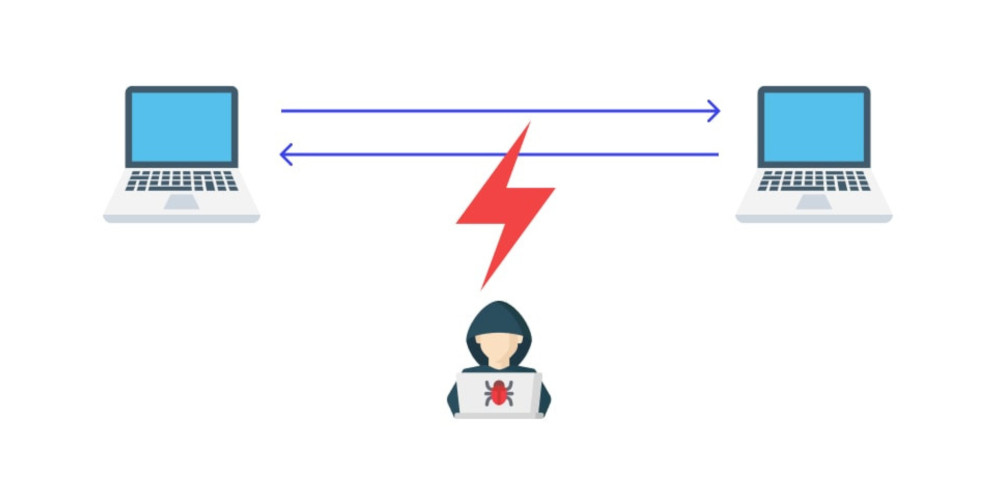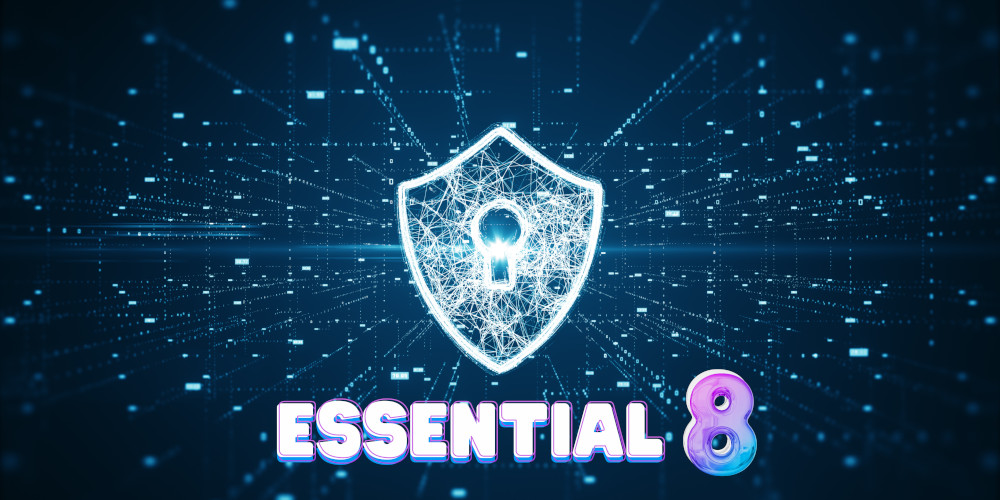
by Renee Bean | Jan 18, 2024 | Cybersecurity, I.T.
In an era where digital threats loom large, organisations must adopt robust cybersecurity measures to safeguard their sensitive information. The Australian Cyber Security Centre (ACSC) has provided a comprehensive framework known as the Essential Eight, comprising eight essential mitigation strategies designed to fortify your organisation’s defences. This article provides a general overview of the Essential Eight, paving the way for a deeper dive into each individual strategy in subsequent articles.
What is the Essential Eight?
The Essential Eight is a set of hardening or mitigation strategies recommended by the ACSC to protect against a broad spectrum of cyber threats. While initially designed for Windows infrastructure, these strategies are versatile and applicable across various environments. They serve as a fundamental foundation for organisations looking to establish a robust security posture.
Maturity levels
To guide organisations in implementing the Essential Eight, the ACSC has defined maturity levels (Maturity Level Zero through to Maturity Level Three). These levels are designed to address increasing levels of tradecraft and targeting, crucial aspects discussed further below. The maturity levels offer a strategic progression, enabling organisations to systematically fortify their cybersecurity resilience. Considerations should focus on mitigating different levels of tradecraft and targeting, aligning with organisational capabilities and the potential desirability to malicious actors. Each maturity level comes with specific requirements outlined at the cyber.gov.au website, offering a comprehensive approach to enhance cybersecurity posture.
ACSC Information Security Manual (ISM):
As your security posture evolves, mapping it to elements of the ISM assists in understanding how the Essential Eight fits within your overall security framework.
Key Components of the Essential Eight:
1. Patch Applications:
Regularly updating software applications is crucial to addressing vulnerabilities and reducing the risk of exploitation.
2. Patch Operating Systems:
Keeping operating systems up to date ensures that security flaws are promptly addressed, enhancing overall system resilience.
3. Multi-Factor Authentication (MFA):
Adding an extra layer of security beyond traditional passwords is essential for protecting sensitive accounts and systems.
4. Restrict Administrative Privileges:
Limiting access to administrative functions minimises the potential for unauthorised changes, reducing the risk of security breaches.
5. Application Control:
Managing the execution of applications helps prevent the installation and execution of malicious software.
6. Restrict Microsoft Office Macros:
Controlling the use of macros in Microsoft Office applications mitigates the risk of macro-based threats.
7. User Application Hardening:
Enhancing the security of user applications reduces attack surfaces and strengthens the overall security posture.
8. Regular Backups:
Implementing and maintaining a robust backup and recovery process is crucial for ensuring business continuity and resilience against ransomware and other destructive events.
The Importance of Regular Backups:
While all eight strategies play a vital role, special attention is often given to the practice of regular backups. By realistically assuming the possibility of losing access to IT resources, organisations can develop plans to ensure business continuity. The focus on key elements of the backup and recovery process is paramount, ensuring that important data, software, and configuration settings remain intact.
Challenges and Solutions:
Implementing the Essential Eight, especially regular backups, comes with its own set of challenges. Testing restoration of backups, securing backups, and protecting them from modification or deletion are critical aspects that require careful consideration. Subsequent articles will delve deeper into these challenges and provide practical solutions for organisations to strengthen their cybersecurity posture. In conclusion, the Essential Eight serves as a comprehensive guide for organisations seeking to enhance their cybersecurity resilience. By incorporating these mitigation strategies, businesses can significantly reduce their vulnerability to cyber threats. The subsequent articles in this series will explore each strategy in detail, offering practical insights and guidance for implementation. Stay tuned to fortify your organisation’s defences in an ever-evolving digital landscape.

by Renee Bean | Jan 16, 2024 | Cybersecurity, I.T.
In the dynamic landscape of technology, small businesses often rely on Managed Service Providers (MSPs) for comprehensive IT solutions. However, one prevalent misconception persists—the belief that engaging an MSP guarantees complete protection against evolving cyber threats. Unveiling this myth, recent studies reveal that 85% of cyberattacks stem from human error, making employee education paramount in fortifying organisational information security.
Creating a Comprehensive Cybersecurity Awareness Program:
To empower small businesses against cyber threats, MSPs must establish robust cybersecurity training programs. These initiatives should equip clients and their employees with the knowledge and skills to understand their responsibilities, safeguard sensitive information, and identify signs of potential cyberattacks.
Phishing and Social Engineering:
One of the most insidious threats, phishing, and social engineering exploit human vulnerability. MSPs must educate clients about recognising phishing attempts, which often involve clicking on deceptive links or providing sensitive information. Key indicators include content errors, a sense of urgency, and suspicious email addresses. Immediate actions include informing IT and resetting passwords to mitigate potential damage.
Access, Passwords, and Connection:
Client cybersecurity training should delve into network aspects like access privileges, password security, and network connections. MSPs can guide employees in creating secure passwords, emphasising uniqueness, length, complexity, and regular updates. Additionally, users should exercise caution with external network connections, using trusted sources or VPNs to ensure secure data transmission.
Device Security:
As the era of bring-your-own-device (BYOD) gains momentum, MSPs play a crucial role in educating employees about device security. Every connected device represents a potential vulnerability, making it imperative to understand the risks associated with personal mobile devices. Awareness campaigns should focus on safe browsing habits, judicious app installations, and cautious clicking to protect company data.
Physical Security:
Beyond digital threats, physical security is often overlooked. MSPs can guide clients and employees in implementing practices that enhance physical security. Simple measures such as locking devices when unattended, securing documents in locked cabinets, and proper disposal of sensitive information contribute significantly to safeguarding data.
In the realm of managed services, the responsibility of MSPs goes beyond deploying protective measures; it extends to educating and empowering clients and their employees. Partnering with KeyTech will serve as a valuable resource, offering support, educational materials, and expert insights to help your team enhance their capabilities. By embracing a comprehensive approach to cybersecurity education, KeyTech can fortify your small businesses against the ever-evolving landscape of cyber threats.
Got Questions about Cybersecurity Education? Let’s talk!

by Renee Bean | Jan 3, 2024 | Cybersecurity, I.T.
In recent weeks, an alarming surge of scams, particularly the Meta Business Support scam, has targeted Facebook business and community page owners. As scammers impersonate Meta, users are at risk of falling victim to deceptive messages leading to potential phishing threats. This article aims to equip you with the necessary information to recognise and avoid such scams, ensuring a secure online experience.
The Meta Business Support Messenger Scam
Scammers employ deceptive messages, claiming affiliation with Meta, to target Facebook business and community page owners. These fraudulent messages falsely assert that pages are disabled due to a report by I.N.C. International Concepts, a legitimate women’s clothing brand unrelated to the scam. The scammers create a false sense of urgency, urging users to click on a link under the guise of addressing the alleged issue.
Identifying the Scam
Several variations of the Meta Business Support scam exist, all with the same goal.
Example of a Phishing Message sent to a business page:
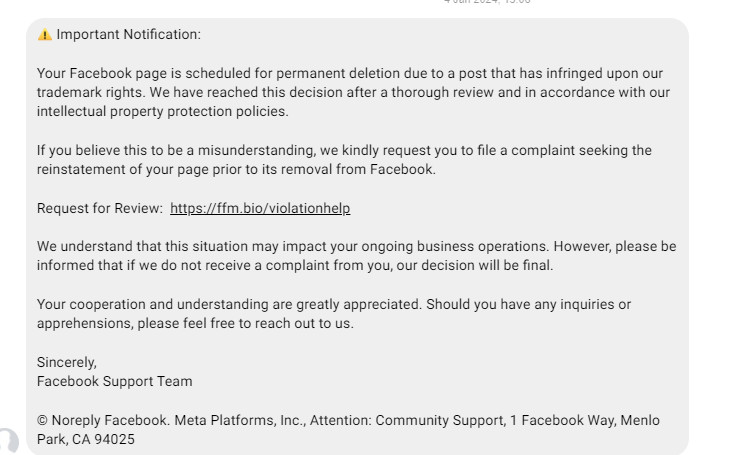
Some Scam URL Examples:
Please note these are only some of the links that have been reported. Clicking on any of these links is a guaranteed encounter with a scam, so it’s crucial to steer clear.
- Mfb[.]mobi
- mfb[.]social
- facebook[.]5246272198633275-pages[.]help/[.]com
- ampl.ink/MetaBusinessSupportwwcom
Facebook Page Deletion Phishing Scams
In a related threat, scammers have been sending messages claiming that Facebook pages are scheduled for permanent deletion due to trademark infringement. The message invites users to file a complaint to prevent the deletion. However, this is a phishing scam aimed at stealing login credentials and personal information.
Protect yourself and your business by staying informed and vigilant against evolving scams in the digital landscape. Remember, a cautious approach is the first line of defence against cyber threats.
How to Stay Safe from Scams
Given the increasing sophistication of scams, it’s essential to adopt proactive measures to protect yourself:
- Verify Web Addresses: Legitimate Facebook pages always start with ‘facebook.com/.’ Ensure you’re on official pages before taking any action.
- Direct Communication: When seeking assistance, use official channels. Avoid clicking on links provided by others; instead, search for the Facebook Help Center and visit the site directly.
- Protect Personal Information: Exercise caution with your personal information. Refrain from sharing sensitive details online.
- Avoid Unknown Links: Never click on links from unknown sources. Verify the legitimacy of links before taking any action.
Reporting Scams
To report a scam group, page, or profile on Facebook, select the three dots on the right-hand side of the page and click ‘report.’ Additionally, you can move the scam phishing messages to the spam folder when received. Report scam websites to the National Cyber Security Centre on its website.
Facebook Help Center Tips and Tools
Facebook’s Help Center provides essential information to enhance your online safety:
- Reporting Scams: If you suspect a scam on Facebook, report it to ensure a safe and secure experience.
- About Scams: Understand how scammers target users, creating fake accounts or compromising existing ones to deceive or defraud.
- Protecting Your Account: Facebook advises users to slow down, spot check information, and never send sensitive details to potential scammers.
Protecting Your Account: Practical Tips
- Don’t Click Suspicious Links: Verify emails, texts, or social media messages claiming to be from Facebook. Check your Facebook settings for recent communications.
- Avoid Unknown File Downloads: Exercise caution with files or software from unknown sources, especially if they request login credentials.
- Say No to Sensitive Information: Never share passwords, social security numbers, or financial information with unknown entities.
Strengthening Online Security
- Enable Two-Factor Authentication (2FA): Add an extra layer of security to your accounts across the Internet.
- Avoid Password Reuse: Use unique passwords for different websites to prevent widespread compromise.
- Use Trusted Antivirus Software: Keep your antivirus software up to date and regularly scan devices for malware.
- Turn on Login Alerts: Be notified if someone attempts to access your account. Review previous sessions to ensure recognised devices have access.
- Visit Security Checkup: Utilise the Security Checkup tool to enhance the security of your account.
Common Scams and How to Avoid Them
Facebook’s Help Center provides insights into prevalent scams:
- Investment Scams: Be wary of promises of unrealistic monetary benefits. Verify offers before making any financial commitments.
- Romance Scams: Exercise caution with romantic messages from unknown individuals seeking financial assistance.
- Job Scams: Avoid misleading job postings that request personal information or upfront payments.
- Lottery Scams: Beware of false claims of lottery winnings that require advance fees.
- Loan Scams: Be cautious of messages offering instant loans for small advance fees.
- Donation Scams: Verify online accounts claiming to represent charities before making donations.
- Inheritance Scams: Exercise caution with messages claiming you’re entitled to an inheritance and requesting personal information.
- Commerce Scams: Be sceptical of online sellers offering goods at unbelievably low prices, especially if they pressure you to move conversations to other platforms.
- Paid Subscription Services: Avoid one-time payments for lifetime access to subscription services, especially if the product is never delivered.
Facebook’s Guidance on Scams
Facebook emphasises vigilance and offers detailed guidelines to stay safe online. If you encounter suspicious activity or are unable to access your account, follow the steps on the Facebook Help Center to regain control.
Staying informed and adopting a cautious approach is your first line of defence against evolving cyber threats. By implementing these recommendations, you can protect yourself and your business from falling victim to scams in the digital landscape.
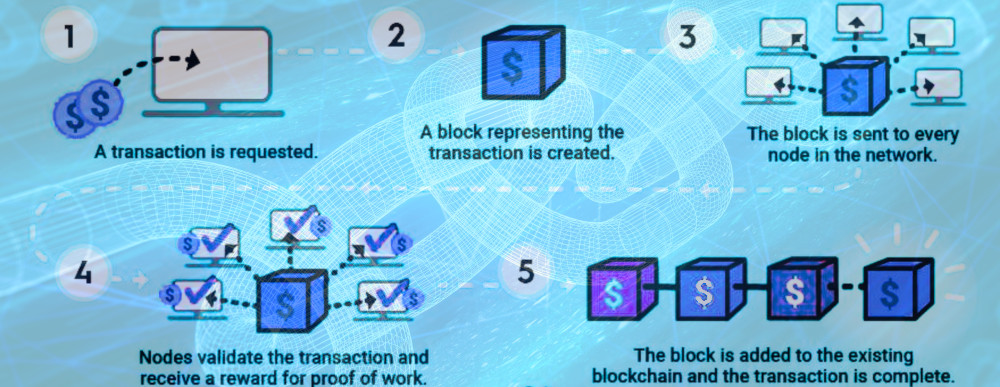
by Renee Bean | Dec 12, 2023 | Business Management, Cloud, Cybersecurity, Solutions
Discover the game-changing possibilities of blockchain technology for businesses! If you’ve ever wondered how blockchain works and what it can do for your business, you’re in the right place. In simple terms, blockchain is a revolutionary digital ledger that could transform the way your business operates. Join us as we explore everything you need to know about this innovative technology and its wide-ranging applications.
Understanding Blockchain Basics
Dive into the fundamentals of blockchain technology, where a network of computers collaborates to validate and secure transactions. Learn how each transaction forms an unalterable ‘block’ connected to previous ones, creating an unbreakable chain. It’s like a tamper-proof digital record-keeping system.
Why Businesses Should Care
Explore the tangible benefits that blockchain brings to the table. Increased transparency, efficiency, and security are just the beginning. Imagine real-time tracking, enhanced operational transparency, and improved supply chain management. We’ll show you how businesses like yours can use blockchain to ensure ethical sourcing, traceability, and more.
Real-world Applications
Witness the impact of blockchain across various industries. Follow in the footsteps of industry giants like Walmart and IBM, who’ve successfully integrated blockchain into their supply chains for heightened transparency and traceability. From finance and healthcare to identity verification and real estate, blockchain is reshaping the way businesses operate.Challenges and Solutions
While the advantages are clear, we’ll also address the challenges businesses might face when adopting blockchain. From the initial lack of widespread understanding to the associated costs and regulatory hurdles, we’ll guide you through potential roadblocks and offer insights on how to overcome them.Blockchain technology is a transformative force that businesses can’t afford to ignore. Our article provides an accessible roadmap for businesses of all sizes, offering a glimpse into the transparency, efficiency, and security that blockchain brings. Embrace the future with confidence, and explore how blockchain technology can give your business a competitive edge. Ready to unlock the potential?
Got questions about securing data? Let’s talk!
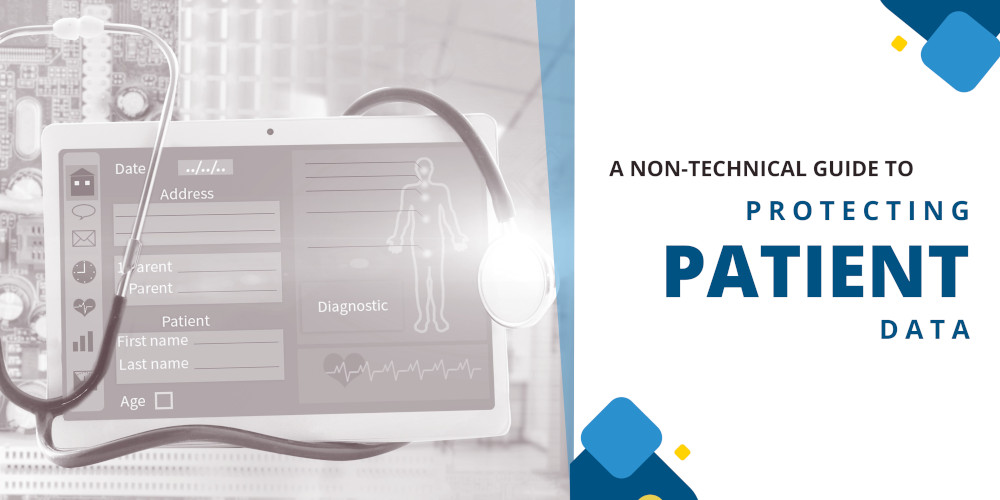
by Renee Bean | Oct 26, 2023 | Business Management, Cybersecurity
Technological advancements have transformed the landscape of healthcare, reshaping the methods through which diagnosis, treatment, and administering patient care in this ever-evolving field. With the rise of digital transformation and the adoption of Internet of Medical Things (IoMT) technology, healthcare professionals find themselves at the forefront of innovation. However, a critical aspect of this digital shift demands attention: cybersecurity.
The Growing Cyber Threat
Recent years have witnessed an alarming surge in cyberattacks, and the healthcare industry has become a prime target. The reason behind this threat? Well, it’s not just about complex technical jargon; it’s about understanding the risks and the steps needed to safeguard patient data.
Understanding the Risk
The healthcare industry is a treasure trove of sensitive data, including patient medical histories, current health records, home addresses, and financial details. This wealth of information makes healthcare organisations an attractive target for cybercriminals. Outdated technical systems and multiple entry points further exacerbate the risk.
Web Application Vulnerabilities
One common avenue of attack is through web applications, the tools healthcare professionals use daily. These applications may have inadequate protection and insufficient security measures in place. Cybercriminals exploit these vulnerabilities to gain unauthorised access to patient data.
Broken Object-Level Authorisation (BOLA) Attacks
One way hackers breach security is through BOLA attacks. Without diving into technicalities, think of it as a clever way to manipulate the system’s rules, granting unauthorised access. This means they can potentially read restricted data or even erase a patient’s private information.
The Internet of Medical Things (IoMT)
IoMT is a crucial part of this digital transformation. It refers to the network of devices and systems that transmit real-time data for improved patient care. While it offers many benefits, the sensitive patient data involved also makes it a potential target for cyberattacks.
Securing Patient Data
So, what can healthcare professionals do to protect patient data without getting lost in the technical jargon?
1. Risk Assessment:
Start with a comprehensive risk assessment. This involves identifying potential weak spots in your digital infrastructure. Consider factors like employee training and awareness. Understand what’s at risk in case of a successful cyberattack.
2. Compliance with The Privacy Act 1988:
The Privacy Act 1988 provides guidelines and standards for data security in healthcare. Compliance with The Privacy Act regulations is crucial for maintaining patient data security.
3. Attack Surface Management:
Think of this as reducing the potential entry points for cybercriminals. Secure your systems, databases, network services, and web-based applications. This helps minimise vulnerabilities that could be exploited.
4. Strong Authentication:
Implement strong authentication measures to ensure only authorised users can access restricted data. This keeps automated malicious tools at bay.
Final Thoughts
As healthcare professionals, your focus is on providing top-notch care to your patients. However, in this digital age, safeguarding patient data is just as important. Understanding the risks and taking steps to secure patient information is not just a technical matter; it’s a crucial aspect of your duty. By conducting regular risk assessments, complying with regulations, and implementing security measures, you can help protect patient data and ensure secure medical systems while technology continues evolving. Your commitment to patient care goes hand in hand with safeguarding their privacy in this digital era.
Got questions about protecting client data? Let’s talk!
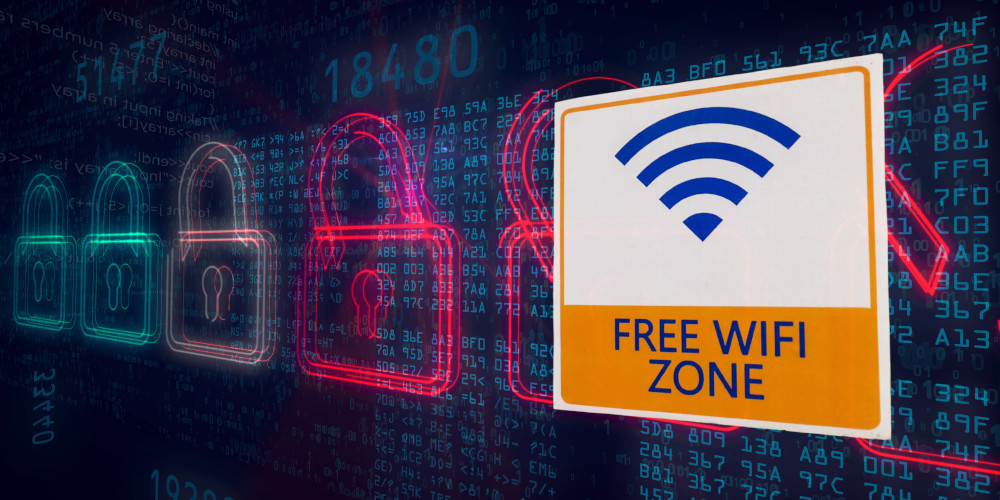
by Renee Bean | Oct 26, 2023 | Cybersecurity, Services, Solutions
October: Cybersecurity Awareness Month
As October unfolds, it’s fitting that we dedicate time to fortify our digital defences and foster a greater understanding of cybersecurity. In this article we turn our attention to a vital aspect of online safety – the risks and best practices associated with connecting to public Wi-Fi networks.
Public Wi-Fi Networks: A Web of Vulnerabilities
Public Wi-Fi networks have revolutionised our connected world, offering us the flexibility to work, browse, and communicate while on the move. However, in the same breath, they have introduced a unique set of security concerns. Let’s explore some of these concerns:
Public Wi-Fi networks are a favourite playground for cybercriminals seeking to intercept data transmissions. They exploit this environment to execute Man-in-the-Middle (MitM) attacks, potentially capturing sensitive information such as login credentials and financial data.
Many public networks lack encryption, making your data susceptible to eavesdropping by anyone with basic hacking skills.
Cybercriminals can set up rogue Wi-Fi hotspots with names that sound legitimate, tricking unsuspecting users into connecting. Once connected, your device becomes vulnerable to a range of attacks.
Public Wi-Fi networks are not always diligently maintained. Outdated routers and software may harbour known vulnerabilities, providing an open door for attackers to compromise connected devices.
Malicious actors may employ eavesdropping attack (Sniffing) techniques to monitor your network traffic. The information they gather can be exploited for fraudulent purposes or even sold on the dark web.
Staying Secure on Public Wi-Fi
Despite these challenges, you don’t have to relinquish the benefits of public Wi-Fi networks. With a few precautionary measures, you can protect your online presence:Invest in a reputable VPN service to encrypt your connection, making it extremely challenging for hackers to intercept your data.
Turn off file and printer sharing, and public folder sharing to prevent unauthorised access to your device.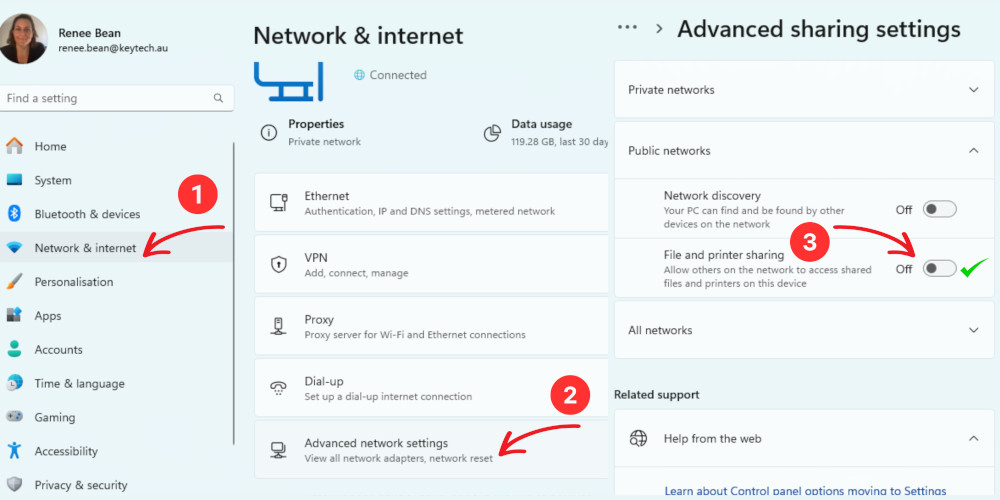
Ensure your device’s firewall is active to block unauthorised incoming connections.
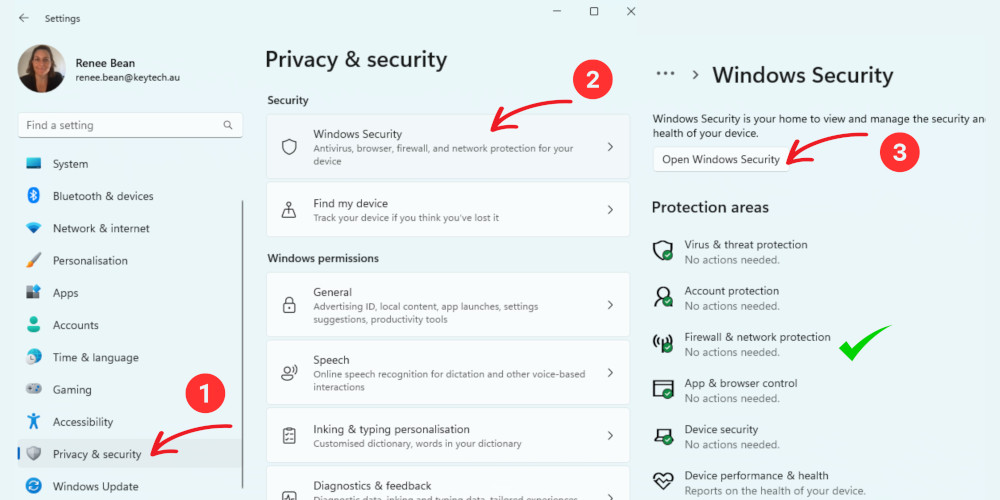
Prioritise networks provided by trusted sources or well-established businesses, steering clear of unsecured networks with generic names.

Verify that websites you visit use HTTPS encryption, adding an extra layer of security to your online activities.

Regularly update your operating system, antivirus software, and other applications to patch security vulnerabilities.

After using a public Wi-Fi network, disconnect and select the “Forget this network” option to prevent auto-reconnection.
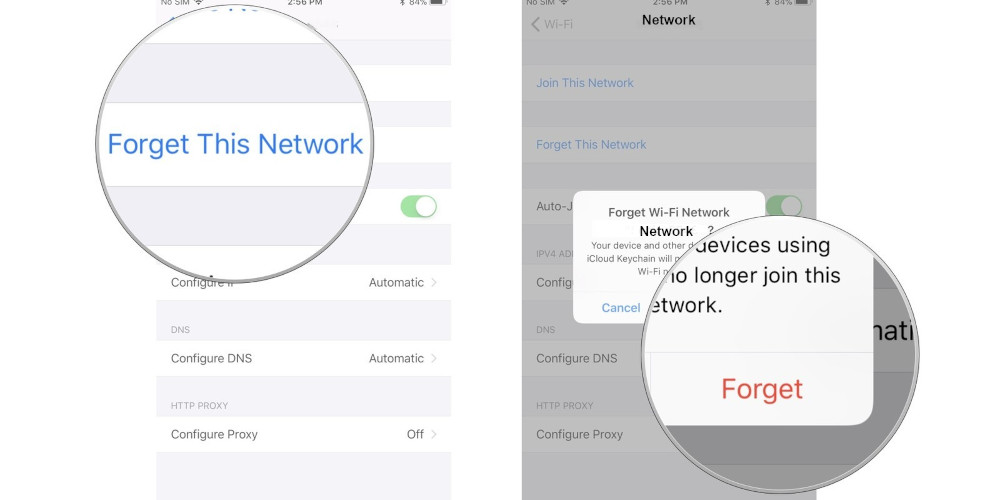
This Cybersecurity Awareness Month, let’s make it a point to enhance our cybersecurity posture when using public Wi-Fi networks. The convenience they offer doesn’t have to compromise our digital security. By following these precautions, you can enjoy the benefits of public Wi-Fi without putting your cybersecurity at risk.
Vigilance, awareness, and a commitment to online safety are the strongest tools we possess in today’s interconnected world. Stay safe and connected!
Got questions about device security? Let’s Talk!








